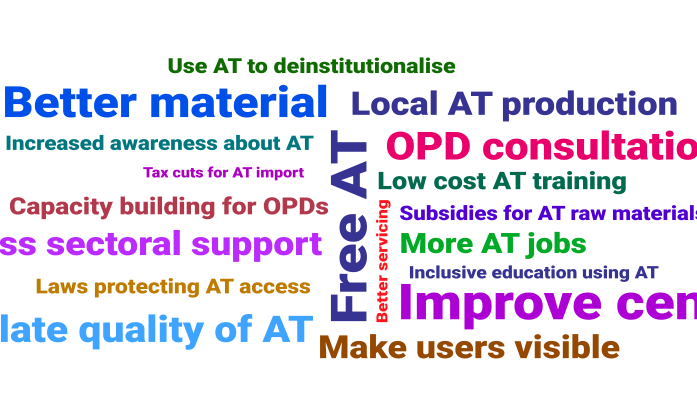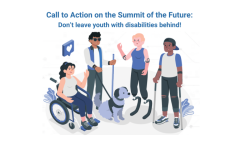This report is the collective work of the International Disability Alliance and Global Disability Innovation Hub GDI Hub. It has been produced under the project “Positioning OPDs as Equal Partners on AT” to provide technical support, disseminate research, and advocate for access of persons with disabilities to assistive technology in respective regions.
Assistive technology (AT) plays a pivotal role in transforming the lives of persons with disabilities, offering a pathway to increased independence, enhanced participation and inclusion, and improved overall quality of life. In settings where access to resources and services may be constrained, AT emerges as a critical enabler, bridging gaps in accessibility and fostering inclusive societies.
The potential of AT in everyday life extends far beyond overcoming physical and communication barriers. It has the potential to act as a catalyst for societal transformation, empowering persons with disabilities to advocate for their rights and inclusion across various aspects of life.
Despite the increased efforts to drive AT user participation and engagement, there is still a large gap in the amount, type and quality of data required to understand the scale and nature of the challenges experienced with several contributing factors. Moreover, there is a significant difference in the availability of assistive technology worldwide. Those with broader access to AT (mainly located in the Global North) face different challenges to those with less access to AT, who are largely located in Low- and Middle-Income Countries (LMICs). The former generally tend to have far greater global advocacy reach, power, and influence.
To bridge the stated gap in collecting data specific to LMICs, and assessing access to AT, IDA and GDI Hub developed an online survey with focused dissemination efforts across LMICs. The survey aimed to collect data on the general prevalence of assistive products and AT need among AT users and potential users, and identifying the barriers that limit the access to AT in LMICs.
Hosted on IDA’s iData platform, the survey was made available in several languages; including English, Spanish, French and Arabic, along with English easy read and international sign. The survey used the Availability, Accessibility, Acceptability, Adaptability, Quality (AAAAQ) framework as a tool to assess access to AT. It also sought to identify major barriers to AT. There were a total of 1040 responses to the survey from over 100 countries; of which 49.3% identified as female, 49.2% as male, 1.0% preferred not to specify their gender, and 0.49% identified as "Other." The data from the survey was analyzed using the filters of respondents identifying as persons with disabilities and as AT users, both with and without disabilities.
The report has been launch in English and will soon be available in Arabic, Bengali, French, Spanish and Urdu. The executive summary of the survey report is available in International Sign here.

Download the report in English (Available in Word and PDF)

Download the report in Arabic (Coming Soon)

Download the report in Bengali (Coming Soon)

Download the report in French (Coming Soon)

Download the report in Spanish (Coming Soon)

Download the report in Urdu (Coming Soon)

